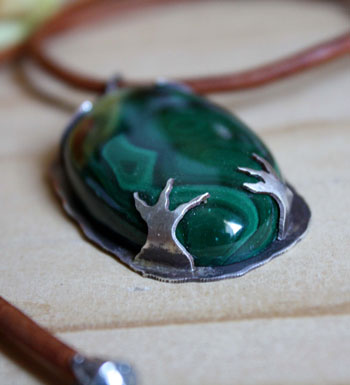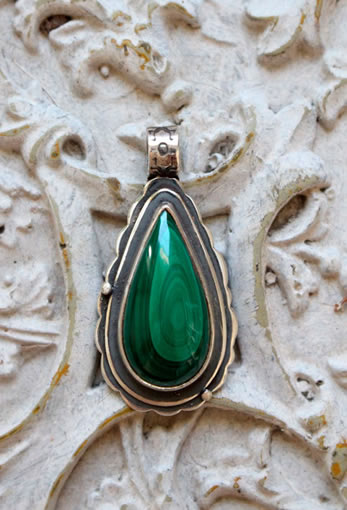- Jewelry
- Inspiration
- Our imagination
- Birthstones
- Celebrating with Eternal Flowers
- Druids and druidesses
- Flower meanings
- History, archeology jewelry
- History and healing properties of metals
- History and healing properties of stone
- Illumination jewelry
- Japanese symbols
- Maya calendar jewelry
- Stone color symbolism
- Stones catalogue
- Wedding anniversaries
- Searches a theme on the site
- Good Deals
- Paintings
- About
- Contact
JEWELRY
- Anklet
- Bracelets
- Brooches
- Cufflinks
- Earrings
- Pendants & Necklaces
- Rings
- Draw your jewelry
- How to clean your jewel
- Metal we used
INSPIRATION
- Our imagination
- Birthstones
- Celebrating with Eternal Flowers
- Druids and druidesses
- Flower meanings
- History, archeology jewelry
- History and healing properties of metals
- History and healing properties stones
- Illumination jewelry
- Japanese symbols
- Maya calendar jewelry
- Stone color symbolism
- Stones Catalogue
- Wedding anniversaries
- Searches a theme on the site
Malachite: history, healing properties and lithotherapy

Malachite properties

Malachite is a mineral belonging to the carbonate class, primarily composed of basic copper carbonate with the chemical formula Cu₂CO₃(OH)₂. Its vibrant green color is attributed to the presence of copper, a key element that also contributes to the formation of its unique patterns, such as concentric circles or bands. These designs often resemble tree rings or eyes, adding to its visual appeal.
This mineral forms mainly in the oxidation zones of copper deposits, often accompanied by other minerals such as azurite, chrysocolla, and turquoise. Although malachite crystals are rare, they can take prismatic or acicular shapes, but it is more commonly found in massive, botryoidal, or stalactitic forms.
Malachite is a soft stone, with a hardness of 3.5 to 4 on the Mohs scale, making it a delicate material requiring careful handling. It is also sensitive to acidity, which can cause degradation upon contact with corrosive substances. For this reason, it is often protected through treatments or finishes when used in jewelry or decorative objects.
Although first mentioned by Pliny the Elder in 77 AD, malachite was known well before that, testifying to its ancient heritage and long-standing history.
The origin of malachite’s name continues to intrigue historians and linguists. While the Greek word "malakos" (soft) reflects its texture and malleability, the hypothesis linking its name to "mallow," a plant with green leaves, enriches its natural symbolism. This dual etymology highlights both its artisanal qualities and its connection to the vegetal world, reinforcing its symbolic link to nature.
In addition to its primary name, malachite is known by a variety of other names, including green chrysocolla, green carbonate of copper, silky copper, green copper flower, green copper oxide, verdigris, ferruginous green copper, and mountain green.
The most famous malachite deposits are located in the Ural Mountains of Russia, the Democratic Republic of Congo (notably in Kolwezi), Namibia, Australia, and Arizona (USA). The Ural deposits, in particular, produced gigantic blocks that left a significant mark on history, such as a 260-ton block. These blocks were often used to create large-scale art and decorative objects, illustrating the opulence of imperial eras.
In Saint Petersburg, an impressive piece of malachite measuring 89 cm in length and nearly 50 cm in width stands as a testament to the majesty of this stone. In 1835, Russian miners from the Urals unearthed an exceptional quality malachite block weighing over 260 tons. Their tireless work over nine years to extract this enormous block, followed by an additional 12 years to bring it to the surface, underscores the value and challenges associated with mining this gem.

Malachite has always been a preferred material in both decoration and jewelry. It adorns tables, boxes, countertops, and columns, adding a touch of sophistication to any environment. Architectural masterpieces like the Hermitage Museum in Saint Petersburg showcase this stone in spectacular ways. The malachite columns in the Throne Room are a dazzling demonstration of Russian imperial opulence. These carefully polished columns reflect radiant light, highlighting the grandeur of the space.
At the Palace of Versailles, malachite is featured in decorative objects, including imposing vases and ornate clocks, underscoring its role in the luxury of European courts. The Vatican also houses malachite objects, such as altars and decorative elements that enrich the artistic and religious heritage of the Renaissance.
The FIFA World Cup trophy, adorned with two pieces of malachite at its base, represents a contemporary use of this stone, combining its natural beauty with symbols of glory and universality.
Malachite powder, used in makeup products, leverages its antioxidant properties for skin cells and its detoxifying power, offering a natural glow and revitalized skin.
In Europe, malachite was highly valued as early as Ancient Rome, not only for its beauty but also for its supposed protective properties against evil spirits. During the Middle Ages, it was also used as a green pigment in paintings, although its sensitivity to moisture limited its durability.
Stories, legends and beliefs about malachite
Malachite, one of the oldest semi-precious stones, has been used for millennia in ornaments. A malachite disk unearthed in Iraq’s Shanidar Valley dates back to the Neanderthal culture, nearly 10,500 years ago, revealing the long history of this fascinating stone.
Malachite beads discovered in the ancient city of Jericho in Israel are approximately 9,000 years old, attesting to its early use in adornments.
In antiquity, malachite was also used as a mineral pigment to create vibrant blue-green hues. However, this mineral-based paint, though striking initially, tends to fade and change color over time.
Malachite was a symbol of power and prestige in ancient civilizations. It was inlaid in the pectorals of Assyrian governors and adorned the scepters of priests, embodying wealth and authority.
The Egyptians were among the first to intensively mine malachite, as early as 4000 BCE. They regarded the stone as a symbol of joy, closely associating it with their goddess Hathor, the protector of miners and the deity of love, music, and motherhood.
The Phoenicians carried malachite amulets during their sea voyages, firmly believing in its ability to shield them from the perils of the ocean.

In ancient Greece and Rome, malachite was highly prized and used to create luxurious jewelry, refined ornaments, and even eye makeup. It was also used in powdered form as a medicinal remedy, believed to have healing properties for various ailments.
Greek generals considered malachite a talisman, guiding their strategic decisions on the battlefield.
In architecture, malachite left its mark as well. The Temple of Artemis at Ephesus, one of the Seven Wonders of the Ancient World, was said to have been decorated with malachite, reflecting the wealth and grandeur of the structure.
During the Middle Ages, malachite was believed to protect against misfortune and illness. It was used to ward off the evil eye, protect children from nightmares, and relieve stomach aches. In some Alpine regions such as Savoy and Switzerland, malachite crosses were given as talismans to pregnant women and mothers.
In Christianity, malachite is mentioned in some translations of the New Testament as the eighth cornerstone of the New Jerusalem, symbolizing stability and spiritual protection. It is also associated with Saint Francis of Assisi, who was believed to possess the ability to understand the language of animals through this stone, thus strengthening his spiritual connection with nature and God’s creatures.
Malachite played a remarkable role at the court of the Russian tsars, especially in the lavish decoration of their palaces. Initially used as a simple button for clothing, its use quickly expanded thanks to the technique of mosaic. This method allowed Russian artisans to cover vast surfaces with thin slices of malachite, creating unique and spectacular patterns.
Under the First French Empire, Napoleon Bonaparte possessed a remarkable collection of malachite objects, gifted by the Russian tsars after the Treaty of Tilsit. This collection, which included a table, chandeliers, and a bowl, symbolized the diplomatic ties between the two empires and the importance of this stone as a prestigious gift.
Mines: Namibia, Russia, Hungary, Chili, Australia, Brazil, France, Mexico, Columbia, the USA and the Republic of Congo.
Healing properties and benefits of malachite
Throughout the long history of humanity, people have attributed various properties, virtues and healing beliefs to malachite. The information presented here is shared from a cultural and historical perspective, in order to illustrate the symbolic relationship that has developed between this stone and different civilizations over the centuries. Like the preceding elements, it is part of our scientific and historical approach. It does not constitute any form of therapeutic or medical recommendation, nor does it reflect our personal beliefs.
- It is said to treat digestive infections and promote the correct metabolism of sugar, thus helping to maintain a healthy digestive system.
- It is believed to strengthen the respiratory system, protecting it against potential viral or bacterial attacks.
- Malachite is thought to correct imbalances in the thyroid and thymus, promoting optimal functioning of these essential glands.
- It may relieve sleep disorders such as insomnia, encouraging restorative rest and better sleep quality.
- It is said to maintain bladder and pancreas health by contributing to their optimal functioning.
- Malachite is renowned for helping alleviate eye problems and preventing eye-related conditions.
- It promotes tissue regeneration, aiding in the healing of wounds and injuries.
- Recommended for regulating menstrual cycles and alleviating cramps, it offers welcome relief during menstruation.
- Malachite is often used to combat osteoarthritis, especially in the spine, helping to ease joint pain.
- It may also relieve asthma symptoms, facilitating breathing and reducing discomfort associated with this respiratory condition.
- It is believed to help lower blood pressure, contributing to a healthy cardiovascular system.
- Malachite is known for its effectiveness in treating epilepsy, providing natural support to reduce seizures.
- It is used to relieve travel sickness symptoms such as dizziness and nausea, offering natural relief during travel.
- In cosmetics, malachite is incorporated into serums or creams for its antioxidant and regenerating properties. These products revitalize the skin, reduce signs of aging, and restore its natural glow.
- Malachite acts as a spiritual guide and a protective stone, neutralizing negative energies and enhancing positive energies.
- It is considered a stone of transformation, helping to overcome fears and emotional blockages. It fosters the opening of the heart, allowing one to embrace changes with serenity and courage.
- In meditation, malachite can be used to explore buried memories and better understand emotional wounds. Its natural patterns, evoking forests or lush landscapes, also help reconnect with nature and regain a sense of unity with the environment.
- Malachite is believed to have soothing properties for the mind, helping to reduce stress and anxiety. It offers a sense of inner calm and can stimulate creativity and imagination by freeing the mind from negative thoughts.
- As it is made of copper, you can also refer to the benefits of this mineral.
 Please note that all healing properties attributed to stones come from ancient traditions and various cultural sources. This information is provided for informational purposes only and does not constitute medical advice. In case of any health concerns, it is recommended to consult a qualified professional.
Please note that all healing properties attributed to stones come from ancient traditions and various cultural sources. This information is provided for informational purposes only and does not constitute medical advice. In case of any health concerns, it is recommended to consult a qualified professional.
Malachite jewelry samples
To learn more about litotherapy, we recommend you the following books:







